Jump to: The Call for a Mint | The First U.S. Mint | A Symbol of the Nation | Expansion West | The Branches of the US Mint | Assay Office and Bullion Depository | Modern-Day Operations
Since its founding, the United States Mint has played a crucial role in shaping the nation's financial landscape.
From the first coins struck in the late 18th century to the modern-day production of bullion and commemorative coins, the U.S. Mint has been an enduring symbol of economic strength and innovation.
In this article, we highlight some of the most critical events in the history of American coinage and the path that led the U.S. Mint to become one of the most respected mints in the world.
The Call for a Federal Mint
On January 8, 1790, President George Washington addressed Congress, emphasizing the need for a national mint to standardize the currency and stabilize the young nation's economy.
At the time, foreign coins circulated widely in the U.S., especially the Spanish dollar, leading to inconsistencies in trade and commerce.
In his speech, Washington urged lawmakers to approve the establishment of a federal mint, a step that would reinforce national sovereignty and economic independence.
Responding to Washington’s appeal, Congress passed the Coinage Act of 1792, formally establishing the U.S. Mint. This act authorized the production of the country’s first official coinage and designated Philadelphia, then the nation’s capital, as the site of the first mint facility.
The First U.S. Mint: Establishing Coinage in America
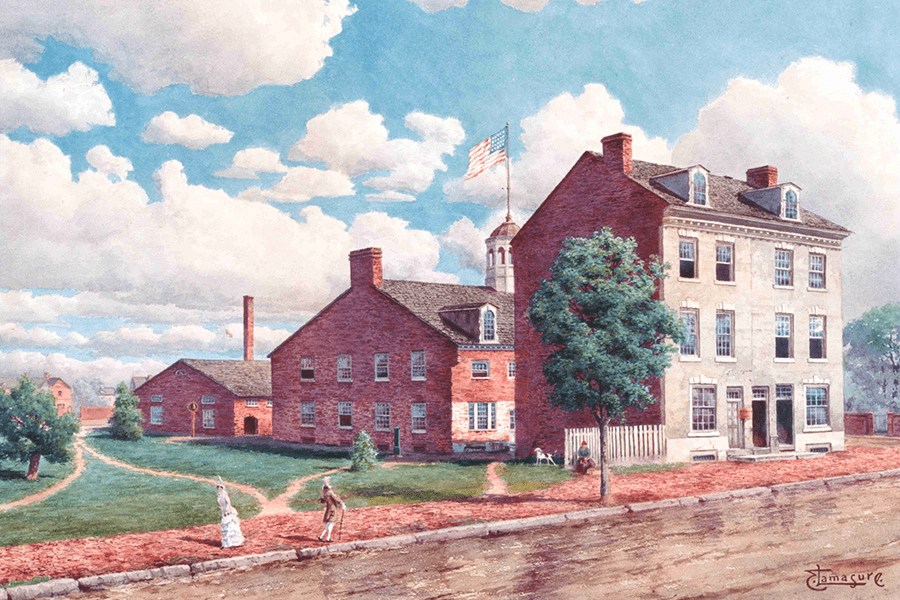
Artistic rendition of the first Mint in Philadelphia
Philadelphia became home to the first U.S. Mint, with construction beginning in 1792. The facility, located at 7th and Arch Streets, was the first official federal building commissioned under the new Constitution.
The Mint’s early coinage production involved a labor-intensive process. Initially, coins were struck using screw presses powered by human effort. Precious metals such as gold, silver, and copper were manually prepared, cut into planchets (coin blanks), and individually struck with dies.
The very first coins produced in 1792 were small experimental pieces, including half dimes (or "half dismes"), reportedly made from silver donated by Martha Washington.
Early Coin Production Methods
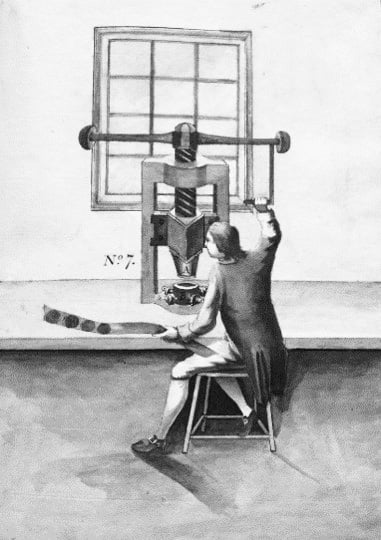
Drawing from “An Essay on Coinage” by Samuel Thompson
In the 18th century, coin production was a slow, labor-intensive process. Workers manually rolled metal strips to the correct thickness before cutting out blank coins, which were then milled to create raised edges and struck using screw presses operated by one to three men.
The first official U.S. coinage, 11,178 copper cents, was issued in 1793, followed by silver in 1794 and gold in 1795. However, with presses producing only a few dozen coins per minute, the Mint struggled to meet demand, leading Congress to allow foreign coins to remain in circulation.
The Industrial Revolution Transforms Coinage
The introduction of steam-powered machinery in the 19th century revolutionized coin production. In 1816, rolling mills and cutting presses were mechanized, and by 1833, Franklin Peale’s European study tour led to the adoption of advanced steam-powered coining presses.
These innovations greatly increased efficiency, enabling a single operator to strike coins at a much faster rate. By the mid-1800s, production reached about 100 coins per minute, and with the opening of branch Mints in 1838, the U.S. finally met its growing currency needs.
That same year, mint marks were introduced to distinguish branch-produced coins, and in 1857, Congress ended the circulation of foreign coins.
Electricity Sparks the Modern Era of Coinage
By 1901, electricity replaced steam power at the U.S. Mint, streamlining operations and further improving production capacity.
As the 20th century progressed, advancements in automation made coin manufacturing faster and more precise, with modern presses working at incredible speeds.
Today, the Philadelphia Mint alone can produce up to 47,250 coins per minute when operating at full capacity—an efficiency level unimaginable in the Mint’s early years of hand-operated presses.
Lady Liberty - A Symbol of the Nation
The depiction of Lady Liberty on early U.S. coins was a deliberate choice reflecting the nation's values and ideals.
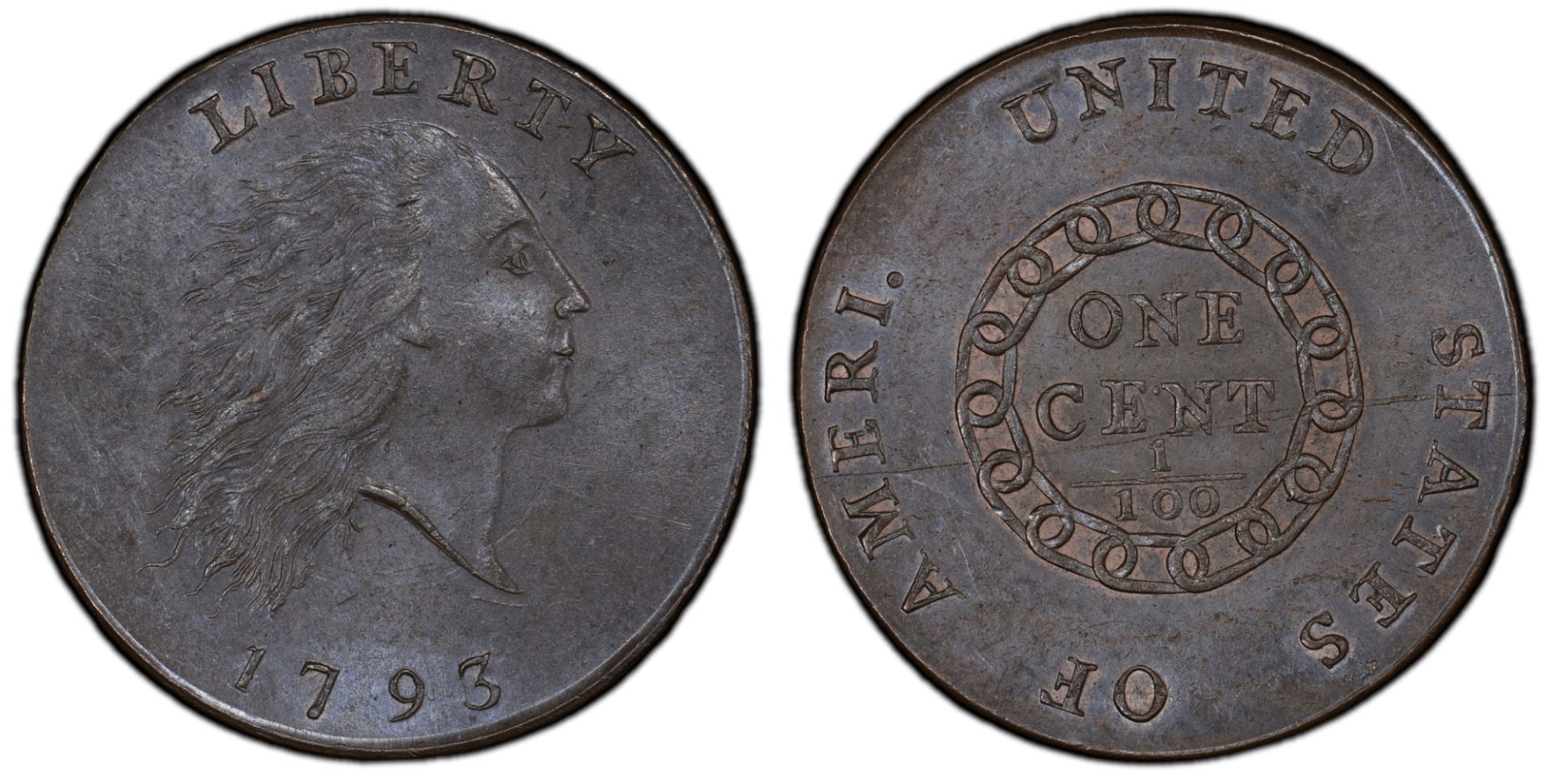
1793 Penny
Inspired by Greco-Roman symbolism, Lady Liberty represented freedom, democracy, and the new nation's commitment to self-governance.
The earliest coin designs featured her in various forms, from the Flowing Hair Liberty of 1794 to the Capped Bust and Seated Liberty designs that followed. Arguably, the most famous representation of Lady Liberty is from the St. Gaudens Double Eagle Gold Coin, designed by prominent sculptor Augusts Saint-Gaudens.
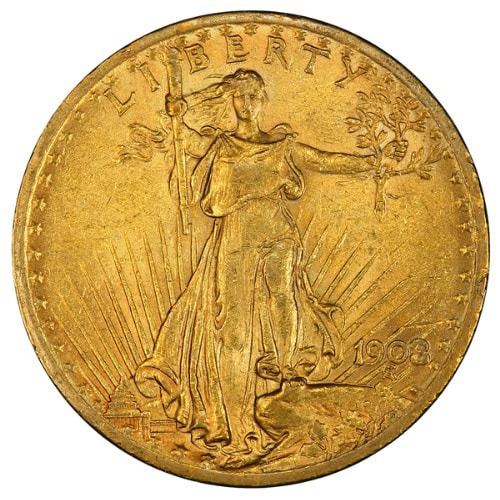
$20 St. Gaudens Double Eagle Gold Coin
This tradition persisted for over a century, with Lady Liberty gracing nearly all U.S. coinage until the early 20th century when presidential portraits began replacing her image.
However, modern coin programs, such as the American Gold Eagles and Silver Eagles and commemorative issues, still pay homage to the classic Liberty imagery.
The US Mint Expands West
The discovery of gold in various parts of the country played a significant role in the westward expansion of the U.S. Mint. The California Gold Rush of 1848 and the earlier gold discoveries in North Carolina and Georgia created an urgent need for local minting facilities.
Transporting raw gold to the Philadelphia Mint was risky and expensive, leading Congress to authorize new mints closer to gold-producing regions.
These expansions ensured that newly discovered gold could be quickly refined and converted into coinage, helping fuel economic growth in the rapidly developing West.
The Branches of the United States Mint

New Orleans Mint. Picture taken in 1897.
As the country grew, the need for additional mint facilities became apparent. The following branch mints were established to accommodate regional coinage demand:
Philadelphia Mint (1792 - Present)
The original Philadelphia Mint was the first federal mint and has been upgraded multiple times. It remains the primary facility for producing circulation coinage, proof sets, and dies for other mints.
Charlotte Mint (1837 - 1861)
Located in North Carolina, the Charlotte Mint exclusively produced gold coins from locally mined gold. It ceased operations during the Civil War and never reopened.
Dahlonega Mint (1838 - 1861)
Situated in Georgia, the Dahlonega Mint was another facility focused on minting gold coins using gold from the Appalachian region. Like the Charlotte Mint, it shut down at the onset of the Civil War.
New Orleans Mint (1838 - 1909)
The New Orleans Mint played a major role in producing both gold and silver coins. It operated intermittently, even under Confederate control during the Civil War, before ceasing production permanently in 1909.
San Francisco Mint (1854 - Present)
Opened during the California Gold Rush, the San Francisco Mint became one of the most important facilities for gold coinage. Today, it primarily produces proof coinage and commemorative issues.
Carson City Mint (1870 - 1893)
Located in Nevada, the Carson City Mint produced silver and gold coins during the height of the Comstock Lode silver boom. Its coins, marked with the "CC" mintmark, are highly collectible today.
Denver Mint (1906 - Present)
Established in response to the gold discoveries in Colorado, the Denver Mint remains one of the most active facilities, producing billions of circulating coins annually.
Assay Offices and Bullion Depositories
Beyond minting facilities, the U.S. government established assay offices and bullion depositories to manage the refining, testing, and storage of precious metals. These institutions played a critical role in supporting coinage and gold-backed financial systems.
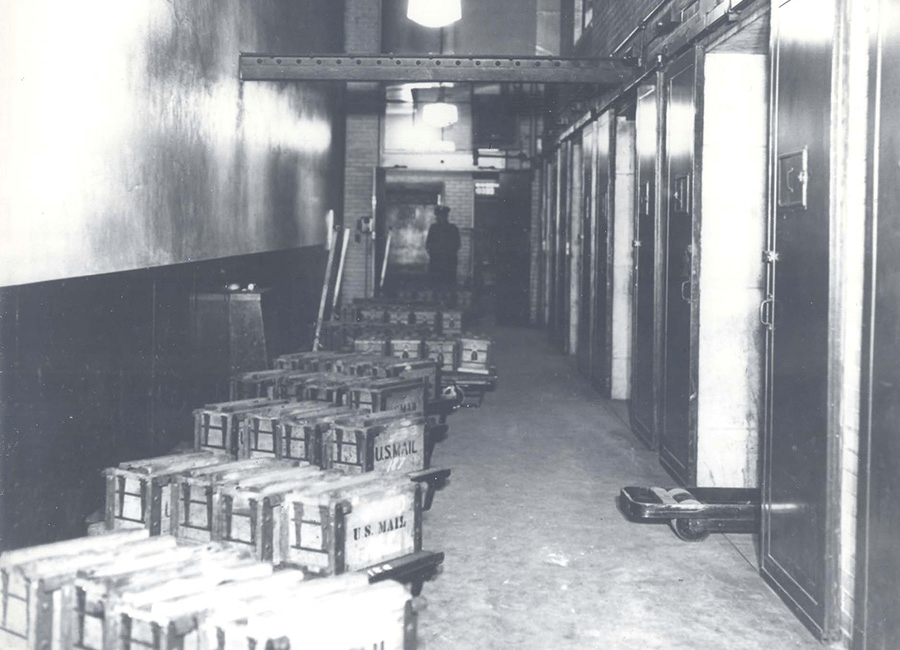
Boxes of bullion arriving at the New York Assay Office
- New York Assay Office (1854 - 1982): Established to process and test gold and silver in the financial hub of the U.S., ensuring accurate valuation and integrity of precious metals before being converted into coinage or bullion bars.
- Fort Knox Bullion Depository (1936—Present): Located in Kentucky, Fort Knox is the most famous bullion depository, housing a significant portion of the U.S. gold reserves and is crucial in securing the nation’s wealth, especially during economic crises.
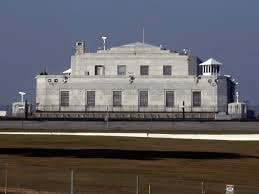
United States Bullion Depository at Fort Knox
Modern-Day U.S. Mint Operations
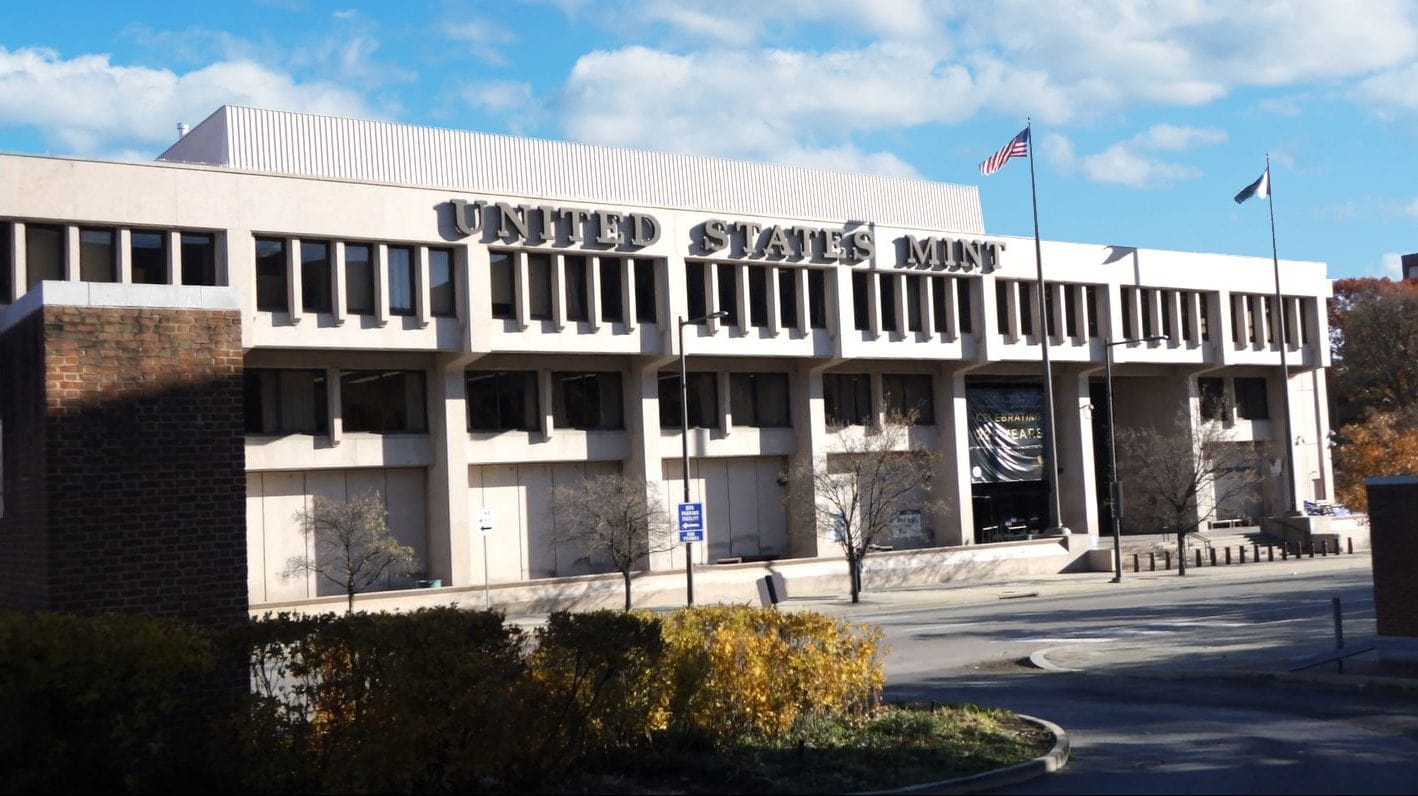
Philadelphia Mint Nowadays
Today, the U.S. Mint operates four active facilities: Philadelphia, Denver, San Francisco, and West Point.
Each mint specializes in different aspects of coin production, including bullion, commemorative, and circulation coins.
Though not a minting facility, the Fort Knox Bullion Depository is managed by the U.S. Mint and serves as the primary storage location for the country’s gold reserves.
The Mint continues to innovate, producing new collectible programs such as the American Women Quarters, the American Eagle bullion series, and high-relief commemorative coins. These initiatives keep U.S. coinage relevant for both investors and collectors.
A Legacy in Precious Metals
The history of the U.S. Mint is a testament to the nation’s economic resilience and ingenuity. From its humble beginnings in 1792 to its role as a global leader in bullion production, the Mint has continuously evolved to meet the needs of collectors, investors, and everyday citizens.
For those looking to invest in precious metals, U.S. Mint coins—whether historic Pre-33 gold coins, modern bullion, or commemorative issues—offer a tangible connection to America’s numismatic heritage.


















